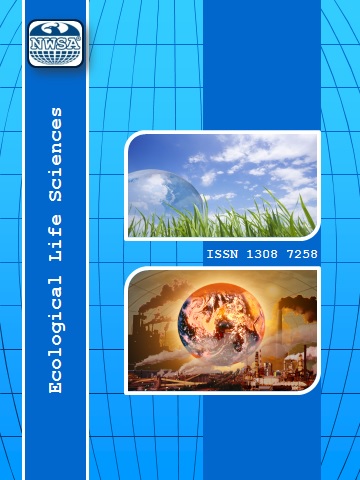References
[1] Morrow, C. and Cárdenas, P., (2015). Proposal for a revised classification of the Demospongiae (Porifera). Frontiers in Zoology, 12:7.
[2] Evcen, A. and Topalo?lu, B., (2024). Diversity of Porifera along the coasts of Türkiye. Turkish Journal of Zoology, 48(6):2. https://doi.org/10.55730/1300-0179.3190
[3] de Voogd, N.J., Alvarez, B., Boury-Esnault, N., Cárdenas, P., Díaz, M.C., et al. (2024). World Porifera Database. Website https://www.marinespecies.org/ porifera [accessed 28 May 2024].
[4] Cook, S.C. and Bergquist, P.R., (2002). Family Irciniidae Gray, 1867. In: Hooper JNA, Van Soest RWM, eds. Systema Porifera: A Guide to the Classification of Sponges. Kluwer Academic/Plenum Publishers, New York, pp:1022-1027.
[5] Wendt, P.H., Van Dolah, R.F., and ORourke, C.B., (1985). A comparative study of the invertebrate macrofauna associated with seven sponge and coral species collected from the South Atlantic Bight. The Journal of the Elisha Mitchell Scientific Society, 101:187-203.
[6] Wulff, J.L., (2006). Ecological interactions of marine sponges. Canadian Journal of Zoology, 84:146-166.
[7] Kata?an, T., Kocata?, A., Bilecik, N., and Yylmaz, H., (1991). Sponge and Sponge Hunting. Trabzon, Turkey: Publications of Directorate of Fisheries Research Institute of Ministry of Agriculture, Forestry and Welfare, 560 pp.
[8] Koukouras, A., Russo, A., Voultsiadou-Koukoura, E., Dounas, C., and Chintiroglou, H., (1992). Relationship of sponge macrofauna with the morphology of their hosts in the north Aegean Sea. Internationale Revue der Gesamten Hydrobiologie und Hydrographie, 77(4):609-619.
[9] Ribeiro, S.M., Omena, E.P., and Muricy, G., (2003). Macrofauna associated to Mycale microsigmatosa (Porifera, Demospongiae) in Rio de Janeiro State, SE Brazil. Estuarine, Coastal and Shelf Science, 57:1-9.
[10] Koukouras, A., Voultsiadou-Koukoura, E., Chintiroglou, H., and Dounas, C., (1985). Benthic bionomy of north Aegean Sea. III. A comparison of the macrobenthic animal assemblages associated with seven sponge species. Cahiers de Biologie Marine, 26:301-319.
[11] Voultsiadou-Koukoura, E., Koukouras, A., and Eleftheriou, A., (1987). Macrofauna associated with the sponge Verongia aerophoba in the North Aegean Sea. Estuarine. Coastal and Shelf Science, 24:265-278.
[12] Duarte, L.F.L. and Nalesso, R.C., (1996). The sponge Zygomycale parishii (Bowerbank) and its endobiotic fauna. Estuarine. Coastal and Shelf Science, 42:139-151.
[13] Çynar, M.E., Ergen, Z., (1998). Polychaetes associated with the sponge Sarcotragus muscarum Schmidt, 1864 from the Turkish Aegean coast. Ophelia, 48(3):167-183.
[14] Çynar, M.E., Kata?an, T., Ergen, Z., and Sezgin, M., (2002). Zoobenthos inhabiting Sarcotragus muscarum (Porifera: Demospongiae) from the Aegean Sea. Hydrobiologia, 482:107-117.
[15] Özcan, T. and Kata?an, T., (2011). Decapod Crustaceans associated with the sponge Sarcotragus muscarum Schmidt, 1864 (Porifera: Demospongiae) from the Levantine coasts of Turkey. Iranian Journal of Fisheries Sciences, 10(2):286-293.
[16] Çinar, M.E., Bakir, K., Do?an, A., Açik, S., Kurt, G., Kata?an, T., Öztürk, B., Da?li, E., Özcan, T., and Kirkim, F., (2019). Macro-benthic invertebrates associated with the black sponge Sarcotragus foetidus (Porifera) in the Levantine and Aegean Seas, with emphasis on alien species. Estuarine, Coastal and Shelf Science, 227:106306.
[17] Pavloudi, C., Christodoulou, M., and Mavidis, M., (2016). Macrofaunal assemblages associated with the sponge Sarcotragus foetidus Schmidt, 1862 (Porifera: Demospongiae) at the coasts of Cyprus and Greece. Biodiversity Data Journal, 4, e8210. https://doi.org/10.3897/BDJ.4.e8210.
[18] Yyiduvar, O., (1986). Hydrographic characteristic of Iskenderun Bay, Institute of Marine Sciences, Middle East Technical University, MSc.Thesis.
[19] Yylmaz, A., Basturk, O., Saydam, C., Egider, D., and Hatipoglu, E., (1992). Eutrophication in Iskenderun Bay, north-eastern Mediterranean. (R.A. Vollenweider, R. Marchetti, and R. Viviani, Editor) In: Marine coastal eutrophication. Sciences of the total Environment; Elsevier Science Publishers B.V., 705-717. Amsterdam.
[20] Özcan, T., (2003). Mavi yengeç (Callinectes sapidus R., 1896) ve Kum yengeci (Portunus pelagicus (L., 1758))nin Yskenderun Körfezindeki da?ylymlary. Mustafa Kemal Üniversitesi, Fen Bilimleri Enstitüsü, Yüksek Lisans Tezi.
[21] Monod, T., (1932). Crustacés exotiques en Méditerranée. La terre et la Vie., 2:65-73.
[22] Bouvier, E.L., 1940. Décapodes Marcheurs, Faune de France, Paris. 37:1-404.
[23] Monod, T., (1956). Hippidea et Brachyura quest-Africains. Memories de Iinstitut Français dAfrique Noire, Ifan-Dakar, 45, 1-674:1-884.
[24] Tortonese, E., (1957). On the echinoderm fauna of Haifa Bay. Bull. Res. Counc. Israel 6B, 3-4:289-192.
[25] Zariquiey-Álvarez, R., (1968). Crustáceos decápodos ibéricos. Investigación Pesquera, 32:1-510.
[26] Lagardére, J.P., (1971). Les crevettes des côtes du Maroc. Trav. Inst. Sci. Chérifien et de la faculté des sciences, Rabat. Sér. Zool. 36:1-140.
[27] Riedl R., (1983). Fauna und Florades Mittelmeeres. Paul Parey, Hamburg & Berlin: 1-836 +pl. 1-15.
[28] Fischer, W., Schneider, M., and et Bauchot, L., (1987). Vegetaux et invertebres, Mediterranee et Mer Noire, Vol.1, AO, 760 p.
[29] Ingle, R., (1993). Hermit crabs of the northeastern Atlantic Ocean and Mediterranean Sea. Natural History Museum Publications, Chapman & Hall, London. 495P.
[30] Falciai, L. and Minervini, R., (1996). Guide des homards, crabes, langoustes, crevettes et autres Crustacés Décapodes dEurope: 1-287. (Delachaux et Niestlé SA, Lausanne-Paris).
[31] Çynar, M.E., (1999). Türkiye'nin Ege Denizi sahillerinde da?ylym gösteren Syllidae (Polychaeta-Annelida) türlerinin taksonomisi ve ekolojisi. Ege Üniversitesi, Fen Bilimleri Enstitüsü, Doktora Tezi.
[32] Do?an, A., (2005). Türkiye'nin Ege Denizi Kyyylarynda Da?ylym Gösteren Bivalvia (Mollusca) Türlerinin Biyo-ekolojik Özellikleri. Ege Üniversitesi, Fen Bilimleri Enstitüsü, Doktora Tezi.
[33] Da?ly, E., (2008). Türkiyenin Ege Denizi Sublittoral Bölgesinde Da?ylym Gösteren Spionidae (Polychaeta-Annelida) Türlerinin Taksonomisi ve Ekolojisi. Ege Üniversitesi, Fen Bilimleri Enstititüsü, Doktora Tezi.
[34] Soyer, J., (1970). Bionomie benthique du plateau continental de la cote catalana Française, III. Les Peuplements de Copepodes Harpacticoides (Crustacea). Vie Milieu., 21:377-511.
[35] Bellan-Santini, D., (1969). Contribution à létude des peuplement infralittoraux sur substrat rocheux (Etude qualitative et quantitative de la franch Superiere). Recherche Travau Station Marine Endoume, France, 63:9-294.
[36] Ilan, M., Ben-Eliahu, M.N., and Galil, B.S., (1994). Three Deep Water Sponges from the Eastern Mediterranean and their Associated Fauna. Ophelia, 39(1):45-54.
 +90(535) 849 84 68
+90(535) 849 84 68 nwsa.akademi@hotmail.com
nwsa.akademi@hotmail.com Fırat Akademi Samsun-Türkiye
Fırat Akademi Samsun-Türkiye
